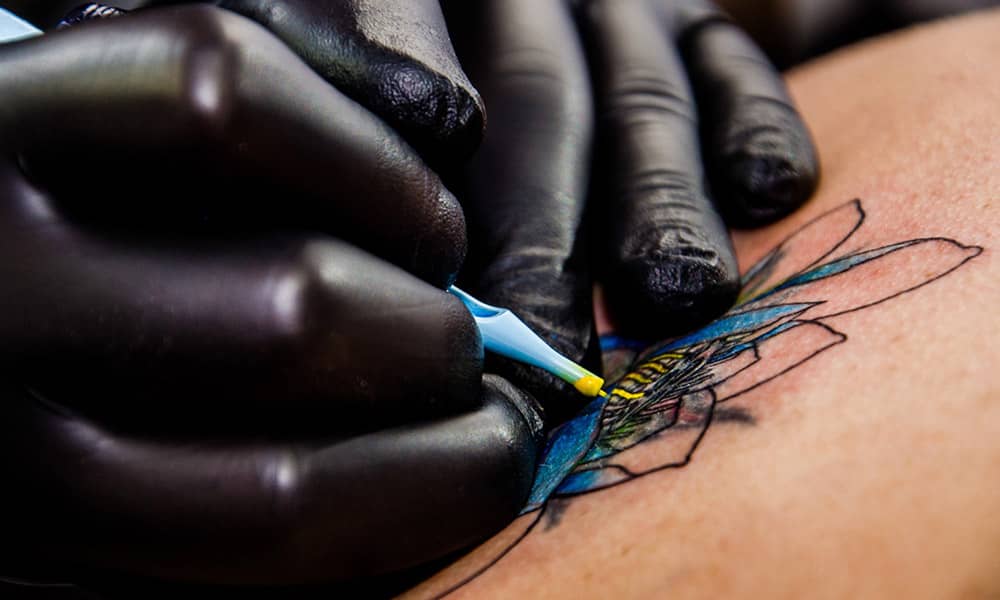5 Things To Consider For Your Tattoo Placement
The tattoo.
Once a sign of deviance, having one or more of them has become increasingly popular over the years. Nearly 40% of Americans aged 18-39 have at least one tattoo and the number is growing.
In fact, the tattoo industry is the 6th fastest-growing industry in the United States. On average, there’s one new tattoo studio opened in the country every single day.
Has the urge to get inked affected you? Maybe you’re considering your first piece, or maybe you’re thinking of adding a new one to your personal canvas. Either way, tattoo placement is a thing to consider — tattoo regret is real.
So, where’s the best spot for a new tattoo? Read on for five top tips for tattoo placement.
1. Tattoo Placement: Think Spacing
If you already know what you want as a tattoo, this can go a long way to figuring out where to put it.
Small tattoo placement can be easier on the one hand because they can go just about anywhere. On the other hand, more options might make it harder to decide.
It usually makes the most sense to put a small tattoo on a smaller part of the body to avoid making it look out of place. Your wrist, ankle, foot, or behind the ear are good bets.
Placing a small tattoo in this way also avoids taking up a large space when you might want to use it for a bigger one later.
For larger tattoo placement, your options are more limited, but this can also make it easier to choose. If you’re thinking of a big piece, your back, thighs, calves, or shoulder are the best candidates.
2. Fit the Art to the Canvas
The shape of the tattoo itself can help you determine where to put it. Does your plan take up round or rectangular space? Is it oblong? Do you want it to be vertical or horizontal?
Longer, thinner pieces, including vertical or horizontal text, work well going down your back or leg or along your forearm. Alternatively, if you want to make a band out of them, they could wrap around any part of your leg or arm.
Round pieces work well on the chest, the back, or the outside of the shoulder.
When you’ve settled on a tattoo idea, start visualizing the way it will take up various spaces on your body. Look for body parts with a similar shape to the tattoo.
3. Who’s It For?
A big consideration in picking a spot should be your intended audience. Do you want to be able to see it? Do you want strangers to be able to see it?
If you’ve got an idea for a tattoo that has a lot of deep, personal relevance to you, chances are you’re going to want to be able to see it.
In this case, pick a spot on the front of your body – places that you can see in the mirror or simply by looking at yourself. Your arms, chest, legs, or stomach are good spots for this. Avoid the back of the body — you might forget you even have the tattoo there from time to time!
Another thing to consider is how much you want others to be able to see your ink.
While acceptance of tattoos in the workplace is on the rise, there is still a stigma around them. In fact, no state in the US has laws preventing discrimination based on tattoos and many employers still find them unacceptable.
If you’re concerned about the impact of your tattoos on your employability, you’ll want to avoid places you can’t hide them. In this case, your face, neck, and hands are probably a no-go.
4. Consider The Pain Factor
Some people who get inked find the pain to be invigorating. Others see it as a necessary evil. Whatever your feelings toward masochism are, it can be helpful to be aware of the pain factor when considering tattoo placement.
Different parts of the body can be more or less sensitive under the needle. Generally speaking, bonier parts of the body are more painful than fleshier ones.
The Most Painful Spots
If you’re trying to minimize the pain of your tattoo, avoid these bony/thin-skinned spots:
- Ribs
- Spine
- Collarbone
- Wrist/Ankle
- Finger
- Sternum
- Feet/Hands
- Inside of the upper arm
Middle of the Road
These areas aren’t painless, but are usually more comfortable than the ones listed above:
- Stomach
- Back
- Chest
- Neck
- Feet
The Least Painful Spots
If you’re really scared of the pain, these are going to be your best choices:
- Forearms
- Calves (except behind the knee or on the shinbone)
- Thighs
- Outside of the upper arm
- Shoulder
5. Will It Move and Age Well?
One last thing to consider when deciding where to get your tattoo is what the skin will do over time. In this regard, considerations around tattoo placement for women can be different than for men.

tattoo placement
Your body is a moving canvas. You’ll want to consider how the tattoo will move with it. For example, your forearm skin sits differently depending on how your wrist is rotated. Which way do you want to be the default? Does the piece look good in any position?
Another thing to think about is how the skin might change. If you gain weight, a stomach tattoo might not look so hot anymore. Women who might become pregnant will probably want to avoid stomach tattoos.
Finishing Touches
Once you’ve settled on an idea and a location, make sure to get your work done with a reputable artist. A good one can help you make final decisions about your tattoo placement.
Check out our blog for other tattoo tips!
To learn more, contact us here.
